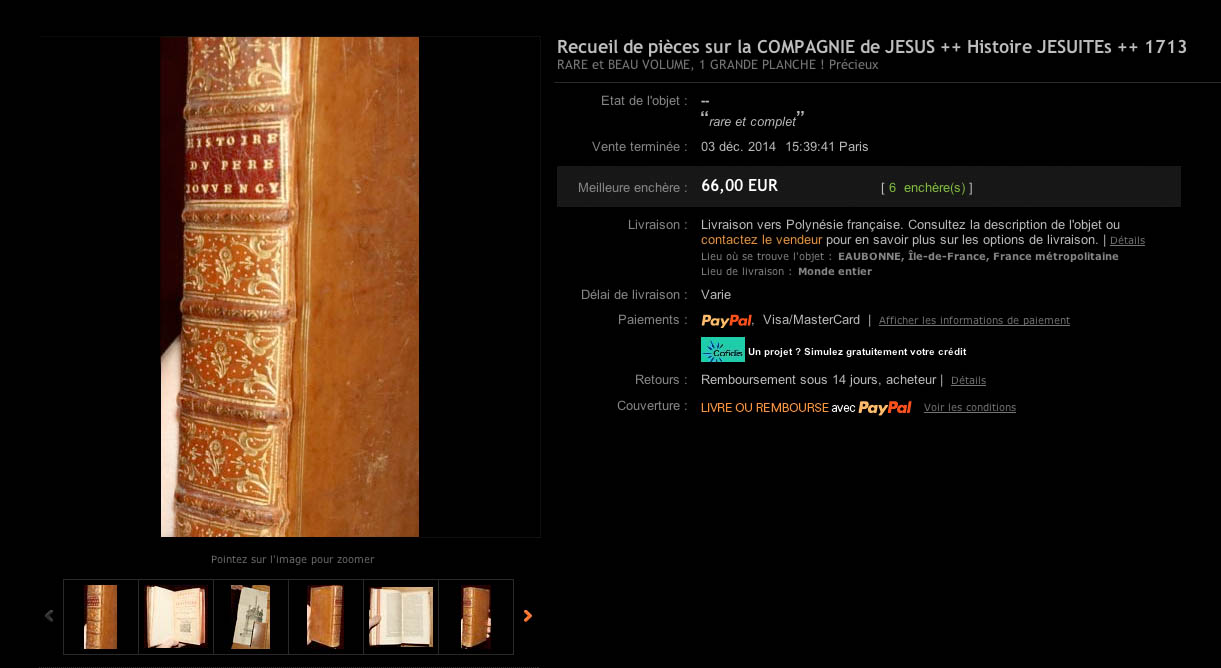

| When I spotted this item someone had already bid 60 euros and I waited till the last hours to bid just over the 60 as it had not changed in the remaining days, no one was bidding on this. I didn't want to get drawn into bidding, so I set a maximum bid of 75 euros and then did not go back to see what happened until the auction was well over. Why was I bidding at all you are wondering, it wasn't for the book, I had no idea what the book was about really I didn't even check because I was only interested in the gold tooling on the spine. Even from a distance I recognized the flower in the center of the spine panels, probably because I had spent hours studying this flower previously (see this page) and the fact that the seller's photos were good enough to allow me to enlarge the spine details. |
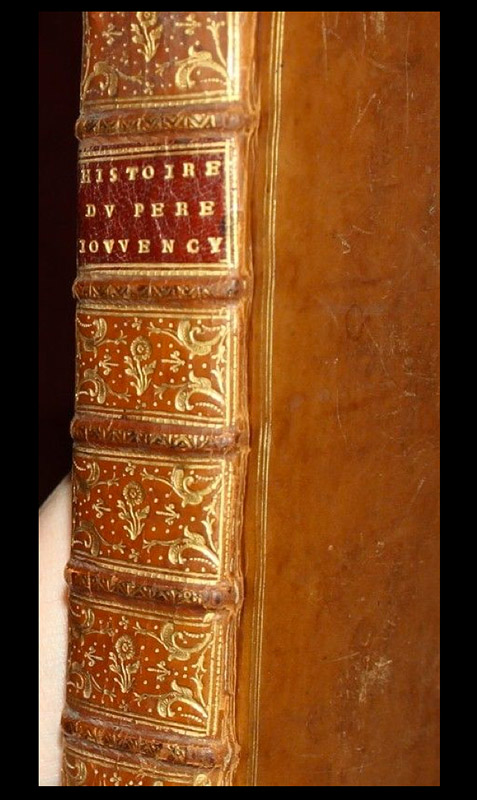
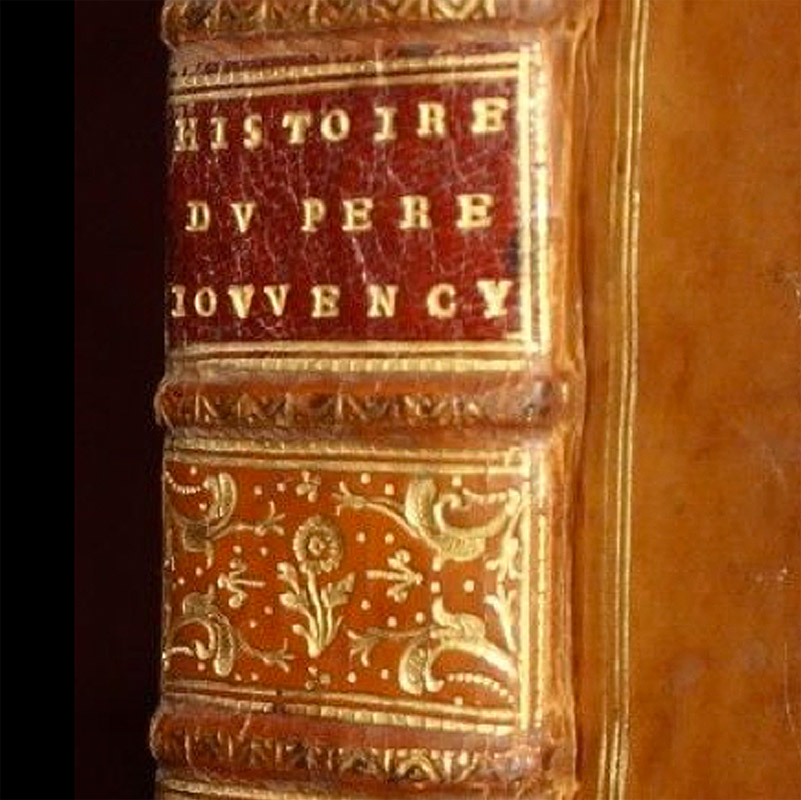
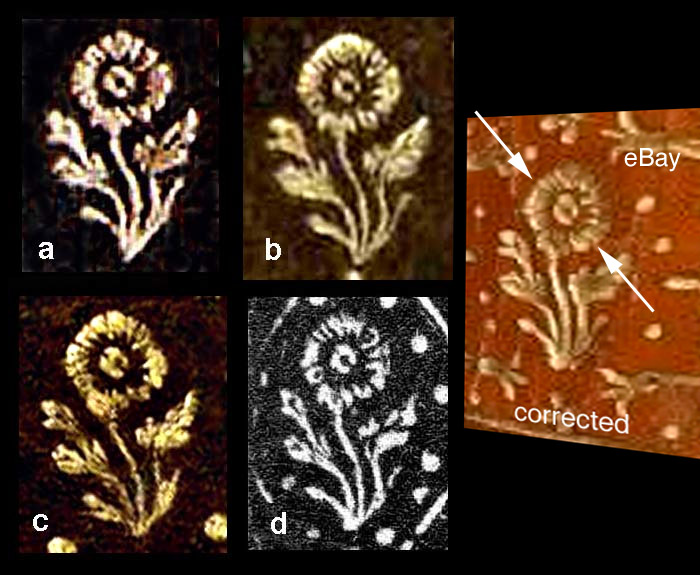
| In Comparative Diagram 1, the white arrows indicate the direction of a diagonal shadow that is often seen crossing the center protion of this flower. The other strange looking imprint that is seen in the corners of the panels I have illustrated on another page (see this page) |
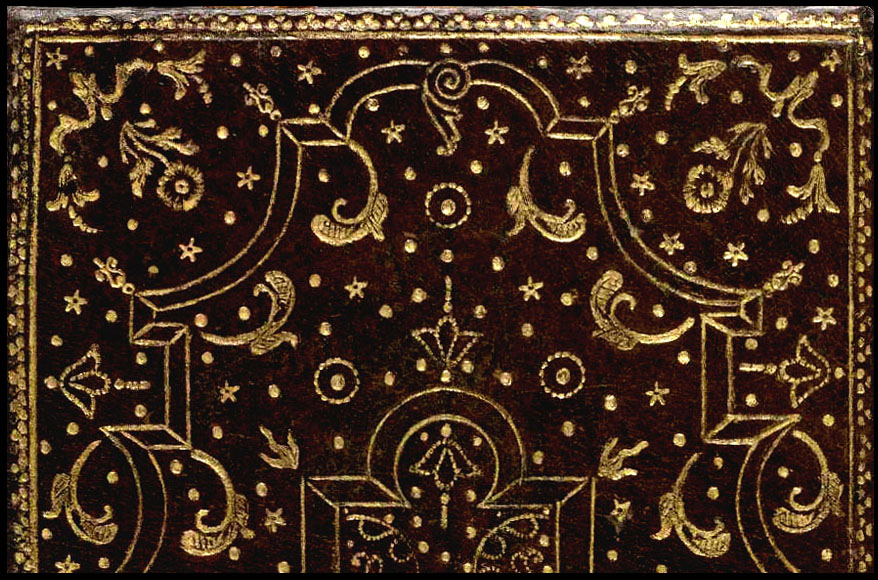
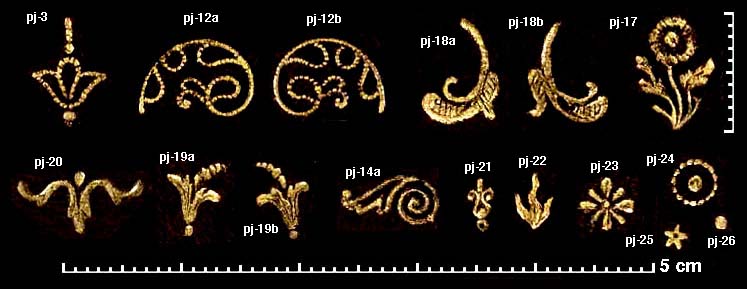
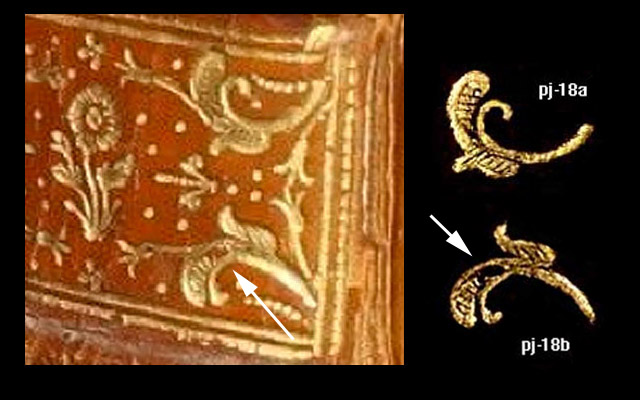
| In Comparative Diagram 3, the white arrows point to a flaw in the pj-18b imprint, an empty space appears at this point in all copies of this imprint. Thus I was fairly confident that this binding was infact made by Padeloup le jeune and was very glad to win it at such a reasonable price. What is such a binding worth, made by one of the most famous French binders of the 18th century. For me it was worth a lot, having this binding ment that I would be able to take high resolution photos of the the imprints as well as the inner dentelle and marbled pastedowns. |
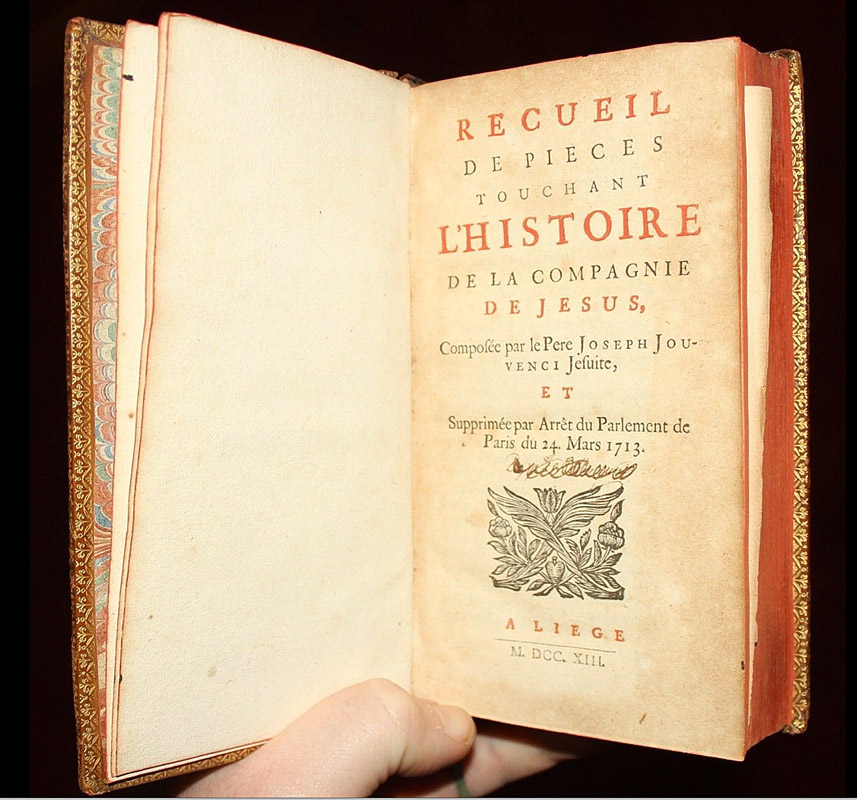
| It was only after I had won this item (binding) that I started to search for information about the book inside, I found only one copy for sale online, of this edition: |
|
RECUEIL DE PIECES TOUCHANT L'HISTOIRE DE LA COMPAGNIE DE JESUS. et Supprimee par Arret du Parlement de Paris du 24. Mars 1713. Seconde Edition Revue, Corrigee & Augmentee. Jouvency, Joseph de 600.00 Abebooks Kenneth Karmiole, Bookseller, Inc. ABAA [publisher: (Nicholas Petit-Pied)., Liege (really Amsterdam)] This work was banned in France after its publication in 1710 because it was found to pose a threat to the rights of the King. The ban was extended to Rome in 1722, where its reading or possession were forbidden. Our second edition contains all of the condemned text as well as extra pieces dealing with the subject of tyrannicide. 12mo. 2 parts in 1. xxii,516;(517)-540pp. The second part of this work, "La Mort de Henry le Grand Descouvert a Naples en l'Annee 1608" has its own title page with the false imprint of Paris: 1619. Illustrated with an engraved folding architectural plate (with a repaired tear). Cont. calf, elaborately gilt decorated spine with red calf label. Small splits at extremities of hinges but holding soundly. Some insect damage to front cover and foot of spine. [Santa Monica, CA, U.S.A.] |
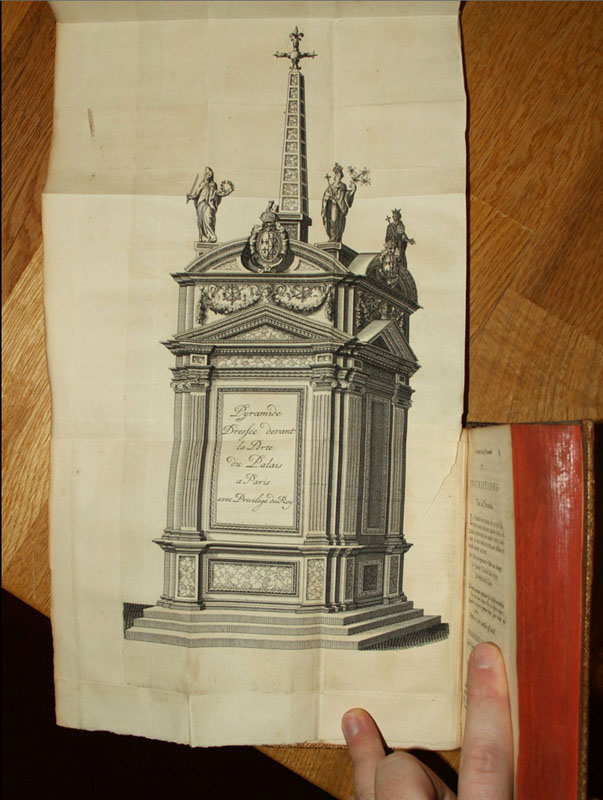
| Shown above is my copy of the "architectural plate" you can see that this book is in very good condition, and must be worth as much as the online example without a binding by Padeloup. But of course the big question is, how could Padeloup have bound and decorated a banned book? I have read that after the death of Louis XIV in 1715, there was a relaxation of the pressure against the Jesuits and perhaps this binding is proof of that. I assume then that it was bound after 1715. Meanwhile we must wait for it to arrive in the mail at which time I will be able to add another page with high resolution photos of these Padeloup imprints. |
| information about the author | return to the home page of VIRTUAL BOOKBINDING |